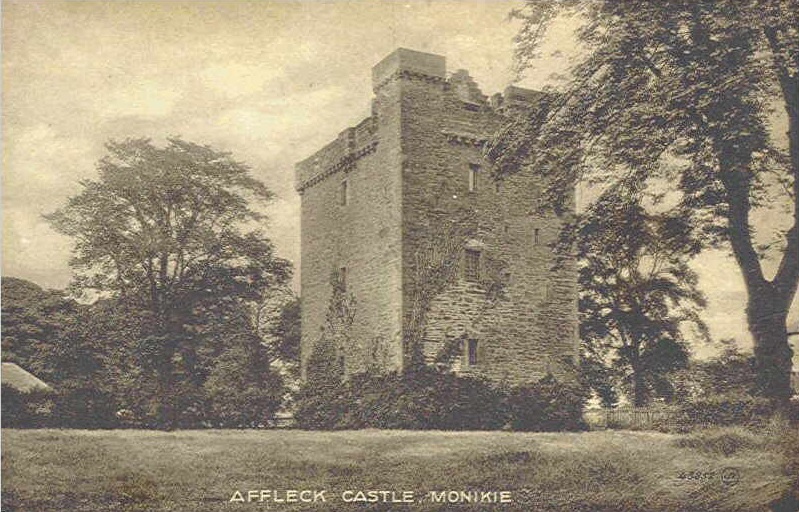Affleck Castle

Affleck Castle Details
Affleck Castle, privately occupied C15 tower house of the Auchenlecks and later, Reids; abandoned C18 and refurbished
- Closest To: Monikie, Carnoustie, Monifieth, Broughty Ferry, Dundee
- Access: No Access
- Grid Reference: NO493389
Affleck Castle lies on a low ridge overlooking the Angus village of Monikie within a small private estate and cannot be clearly seen from any public road. It is privately owned and kept in good repair, and is not open to the public.
The castle as it appears today is an isolated rectangular tower-keep with a small projecting wing at the southern end of the east wall, giving it an L-shaped footprint; first recorded in 1501 it is therefore of a late 15th century date. Entered through a ground floor door protected by a single shot hole in the stair wing, the basement consists of a small entrance lobby accessing the subdivided cellar, provided with shot holes facing outwards. A mezzanine level on joists provides the floor for the first floor great hall, lit by two small windows facing east and west, and a third facing south; the latter possessing a small mural cupboard. The stairs lead up to the second floor where the great fireplace would have warmed the laird’s principal chamber. A second winding stair in the thickness of the wall then leads up to the third floor, containing a small chapel a second fireplace and access to the wallwalk and watch turrets.
The tower was originally called the House of Auchinleck, not to be confused with the family and property of the same name in Ayrshire. This group of Auchinlecks were closely associated with the Lindsay earls of Crawford, claiming the hereditary right to be the earl’s armour-bearers. Occasionally marriages took place between the two families as well. Auchinleck was in the barony of “Downy” (sic) chartered to David Earl of Crawford at the very end of the 14th century, and presumably was granted to the family who took their name from the estate soon afterwards. They remained at Affleck until the mid 17th century, when they perhaps suffered financial penalty for supporting one side or the other in the civil wars, and at this time the estate was sold to Robert Reid, whose descendant Thomas supported Viscount Dundee during the Jacobite period, and was forfeited for his troubles. The castle and estate was then purchased by James Yeaman, a Dundee burgess, whose family resided at Affleck until at least 1765, after which the new mansion was erected nearby to replace it as the main family residence.
Become a supporter of my work to access a more detailed history